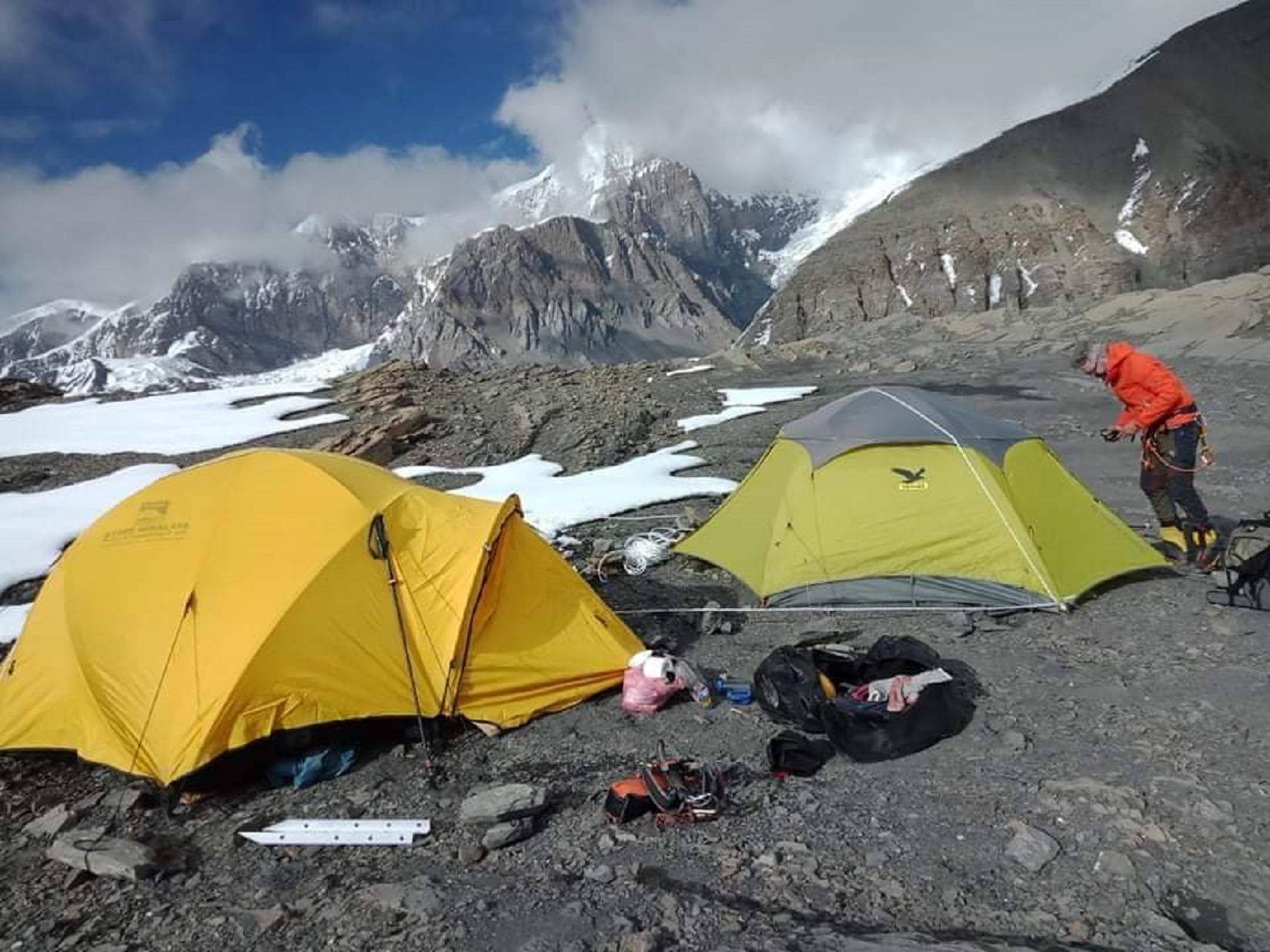Best Time for Peak Climbing in Nepal
- 2023-03-02
- 0
Nepal is an amazing land mainly popular for high mountain massifs and deep valleys of those mountains. It is a country that does not require any armies in the northern lands because the Himalayas work as a border in most of the places.
Thousands of climbers each year visit Nepal only for climbing those mountain massifs. It contains from the tallest peak on the planet to 8 out of 10 tallest peaks; Mount Everest (The highest Peak in the World), Kanchenjunga, Lhotse, Makalu, Cho Oyu, Dhaulagiri, Manaslu, and Annapurna I, lie in Nepal. Not only them but dozens of other 7000m peaks and 1310 Himalayan peaks above 6000m, and among them, 326 are open for climbing and mountaineering activities.
Amongst several Himalayan peaks that allow reaching on top which is suitable for all kinds of mountaineers from the veteran to the novice. In all, mountaineering is one of the major attractions of Nepal.
In Nepal, there are boundless opportunities for mountaineers more than in other countries in the world, and endless challenges including the less-known trekking peaks which still require good climbing gear and skills, this is another reason Nepal has become a paradise for mountaineers.
Numerous climbers land here for novice adventures and for testing their skills, enduring and fulfilling their wish to reach atop Himalayan peaks and praise the entire area from its atop. Here are opportunities for people of all ages, capabilities, and skills. Here are several record-breaking destinations for mountaineering activities.
The veterans dream of Mt. Everest, Annapurna, Manaslu Kanchenjunga, Lhotse, Makalu, and adventurers target Ama Dablam, Baruntse, Himchuli Chulu East and the novice try for Yala Peak, Mera Peak, Island Peak, Tarpuchuli, Pokalde Peak, Chulu West, and Chulu Far West among others which are trekking peaks and suitable for beginners.
Best time for Climbing Peak in Nepal
Nepal has four seasons; Spring (March to May), Summer ( July to August) Spring (September to November), and Winter (December to February). Among those seasons, two seasons viz. Spring and Autumn are considered the best seasons for climbing the mountains, trekking in the Himalayan foothills, and climbing those trekking peaks too.
This is because those seasons have the most favorable weather conditions, bearable temperatures, and other conveniences too. In the off-peak seasons trekking and expeditions are possible but one needs extra preparations and are costly too. The weather and temperatures may not support the jouney and all the efforts may go in vain.
Peak Climbing in Nepal in Spring (March, April, and May)?
Spring, the most popular season for mountaineering welcomes thousands of climbers to climb the easiest peaks to Mt. Everest ( 8848.86m). It is an unbeatable period for any mountain adventure; trekking, peak climbing, skiing, expedition, etc. The trekking trails and climbing routes are mostly busy as it has the most favorable weather conditions, and temperatures, offering unobstructed views, clear skies, warm and sunny days, and chilly nights.
Throughout the trekking trails, you can see flowers blossoming including the rhododendron (the national flower of Nepal), green vegetation, and the hills are beautifully decorated with diverse and colorful flowers and plants. The terrain view is just wow during Spring with wide-spreading Rhododendron and Oak trees.
During this season, the sunshine remains for 9 hours each day except for some occasional clouds. Higher regions, i.e., above 4000m, are colder with an average temperature of 17°C during the daytime. Similarly, the maximum temperature is around 25°C on sunny days, and the minimum temperature is during the morning and night times, i.e., -15°C. The temperature of the peaks atop always stays under the freezing level.
Why should one climb peaks in Spring?
- You can walk via colorful flowers and green trails.
- You can trek and climb in clear, stable, and dry weather conditions
- Trekkers can enjoy the clear visibility of mountains and terrain
- They can experience the beauties of the mountains which you experienced before.
- On the way, throughout the forests flowers blooms making the area spectacular.
- Rare mountain animals are visible during this season.
Peak Climbing in Nepal in Autumn (September, October, November)
Autumn is another perfect season to climb peaks. September, October, and November are the peak times to trek and peak climb in Nepal. The trekking routes and peak climbing destinations. The trails are busy during these months.
As Autumn falls just after the monsoon season which washes all the dust from the terrains and vegetation making the entire environment. Although the early-September sees some rainfalls as the monsoon is on the brink of farewell.
There is greenery everywhere. The waterfalls, ponds, rivers, streams, and lakes get refilled after the monsoon. It is the best season to see water glory in Nepal. Above the rivers, mighty mountains always await you.
Autumn offers the ideal temperature for peak climbing and trekking in Nepal. An average temperature above 4000m is around 15°C which is the best temperature for Peak Climbing. Likewise, during the day, in sunny times, the temperature may rise up to 20°C.
In the mornings and evenings, the temperatures might fall up to -10 °C. In the summits, the weather becomes favorable and allows the climbers to enjoy the panorama. Throughout the season, the air is so fresh and chilly and there are crystal skies and uninterrupted mountain views.
All in all, you will find stable, transparent, and dry weather from mid-September till the late-November. This is why the Autumn season is favored by trekkers and climbers. The view from every angle of everything seems so beautiful. The Autumn season only lacks blossoming flowers, but other things are just perfect.
Why should one climb peaks in Autumn?
- To obtain ideal temperatures and a favorable climate for trekking and climbing.
- To enjoy the clear visibilities, and unobstructed views of the green hills, high mountains, and deep valleys.
- To explore cultural, traditional, and religious festivals of Nepal such as Dashain and Tihar
- To get fresh and dust-free views of terrains and the entire surroundings.
- To see the picturesque waterfalls, streams, fresh and gushing rivers, lakes, and ponds full of water.
- Peak Climbing in Nepal in winter (December, January, and February)
Although winter is considered the off-peak season for climbing the Himalayas, as the mountains are covered with white blankets of snow, and some freezing temperatures with the extreme weather conditions,
However, if you are an adventure lover, the winter never is an excuse for climbing parks in Nepal. Some climbers enjoy the empty trekking trails, no queues at all in the airports, and climbing routes. There is no rainfall et all, the trekking routes are not slippery and the views of the mountains are breathtaking with full of snow.
Also, climbers can get heavy discounts on restaurants, hotels, flights, permits, and accommodations during winter and they can enjoy solitude all around the journey.
Why should you climb peaks in Winter?
- To enjoy less-crowded trails, hotels, and restaurants.
- Easy to book flights and accommodations with heavy discounts.
- Sunny days, chill nights, and mild dawns and dusks
- Dry weather and no chance of rainfall l which makes it easier to walk
- Clear views of the mountains, valleys, lakes, ponds, and other flora and fauna
- Peak Climbing in Summer (June, July, and August)
Summer is overlapped with the monsoon season in Nepal. It receives heavy rainfall and all the rivers, streams and waterfalls are full of water and somewhere on the way there might be big landslides and floods in the rivers. The trekking routes might be destroyed and the trails are full of mud and slippery.
Thus we do not recommend our valued guests avoid summer to climb mountains. Although it is the best season to explore Kathmandu valley and the historical, cultural, and religious monuments of World Heritage Sites, we encourage you to postpone your Himalayan trips for other seasons.
Final Say
Spring and autumn are the perfect seasons for climbing peaks in Nepal. Further, if you wish for high mountains such as Everest, only Spring is the ideal season. The trekking peaks can be achieved in the other two seasons (Autumn and Winter) too.

